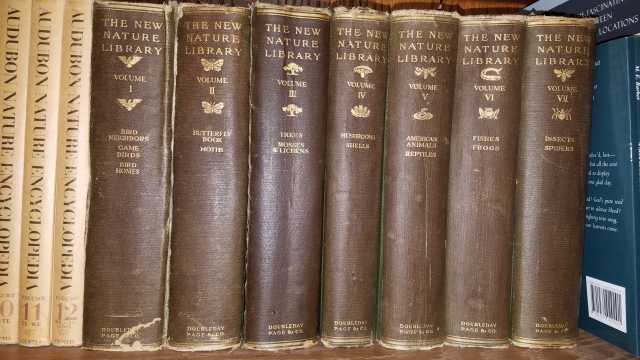The Great Crested Flycatcher
The other day I heard an unfamiliar bird call (actually from a small group of them) in my backyard. I tried in vain to spot them high up in the trees where they were flitting about. The call was so distinctive that I felt that it should be easily identified, so I took a short movie with my Olympus camera, extracted the audio,
and sent it to Cliff Shackelford, Texas Parks & Wildlife Non-Game Ornithologist (who does a cool program on Red River Radio every 2nd Tuesday at 6:00 p.m. called “Bird Calls”). He quickly ID’d them as Great Crested Flycatchers. Later I was looking at some photos I took when I pointed my camera to where they had flown to but still did not see the actual bird. To my surprise, when I enlarged the photo, I got a fairly good, in-focus shot of one.
I tried in vain to spot them high up in the trees where they were flitting about. The call was so distinctive that I felt that it should be easily identified, so I took a short movie with my Olympus camera, extracted the audio,
and sent it to Cliff Shackelford, Texas Parks & Wildlife Non-Game Ornithologist (who does a cool program on Red River Radio every 2nd Tuesday at 6:00 p.m. called “Bird Calls”). He quickly ID’d them as Great Crested Flycatchers. Later I was looking at some photos I took when I pointed my camera to where they had flown to but still did not see the actual bird. To my surprise, when I enlarged the photo, I got a fairly good, in-focus shot of one.
 I looked up this fellow in my treasured set of “The New Nature Library” in volume 1, part 1 – “Bird Neighbors” by Neltje Blanchan (originally published in 1897), which originally belonged to my grandfather . The description of their habit was so much like my experience I had to laugh, and decided to share it here.
I looked up this fellow in my treasured set of “The New Nature Library” in volume 1, part 1 – “Bird Neighbors” by Neltje Blanchan (originally published in 1897), which originally belonged to my grandfather . The description of their habit was so much like my experience I had to laugh, and decided to share it here.
“The most dignified and handsomely dressed member of his family [the flycatchers], the crested flycatcher has, nevertheless, an air of pensive melancholy about him when in repose that can be accounted for only by the pain he must feel every time he hears himself screech. His harsh, shrill call, louder and more disagreeable than the kingbird’s, cannot but rasp his ears as it does ours. And yet it is chiefly by this piercing note, given with a rising inflection, that we know the bird is in our neighborhood; for he is somewhat of a recluse, and we must often follow the disagreeable noise to its source in the tree-tops before we can catch a glimpse of the screecher. Perched on a high lookout, he appears morose and sluggish, in spite of his aristocratic-looking crest, trim figure, and feathers that must seem rather gay to one of his dusky tribe.” ….
“He has even been known to drive off woodpeckers and bluebirds from the hollows in the trees that he, like them, chooses for a nest, and appropriate the results of their labor for his scarcely less belligerent mate. With a slight but important and indispensable addition, the stolen nest is ready to receive her four cream-colored eggs, that look as if a pen dipped in purple ink had been scratched over them.
“The fact that gives the great-crested flycatcher a unique interest among all North American birds is that it invariably lines its nest with snake-skins if one can be had. Science would scarcely be worth the studying if it did not set our imaginations to work delving for plausible reasons for Nature’s strange doings. Most of us will doubtless agree with Wilson (who made a special study of these interesting nests and never found a single one without cast snake-skins in it, even in districts where snakes were so rare they were supposed not to exist at all), that the lining was chosen to terrorize all intruders. The scientific mind that is unwilling to dismiss any detail of Nature’s work as merely arbitrary and haphazard, is greatly exercised over the reason for the existence of crests on birds. But, surely, may not the sight of snake-skins that first greet the eyes of the fledgling flycatchers as they emerge from the shell be a good and sufficient reason why the feathers on their little heads should stand on end? “In the absence of a snake-skin, I have found an onion skin and shad scales in the nest,” says John Burroughs, who calls this bird “the wild Irishman of the flycatchers.””


